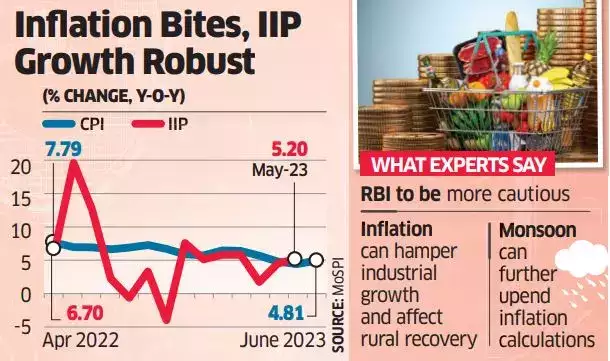Monsoon’s uneven progress may increase food inflation
Context:
The southern peninsula, Deccan Plateau, and the eastern region continue to experience a below-normal monsoon, and kharif sowing for crops like rice and pulses remains lower than last year, risking faster food price inflation. This is despite a wetter July so far that has raised the overall rainfall above the long-period average.
How much Rainfall did India receive?
- The month of July saw an increase in precipitation, pushing the total amount over the long-term average.
- However, other areas continue to have below-average monsoon conditions, such as the southern peninsula, Deccan Plateau, and the eastern region.
- There has been an uneven distribution of rainfall, with certain regions in West and North India receiving copious rain and other States, including Bihar and Jharkhand, receiving insufficient amounts.
How much was India able to sow during this kharif agricultural season?
- The term “Kharif sowing” describes the agricultural technique of sowing seeds during South Asia’s monsoon season, known as the Kharif season.
- The southwest monsoon usually arrives in June, marking the beginning of the Kharif season, which lasts until September.
- Because the monsoon rains supply the essential water for their growth, this season is critical for the majority of crops in the area.
- As of July 15, the total area of Kharif crops seeded in India was 2% less than it had been during the same time last year.
- The seeding of important crops including maize, rice, and legumes has been inadequate this year.
- Among the major crops, the sowing of rice has decreased by 6.1%, the sowing of maize has decreased by 5.6%, and the sowing of pulses has significantly decreased by 13.3%.
- Arhar, a kind of pulse crop, has been severely impacted; this year’s seeded area was more than 38% lower than last year’s.
What is the Future Prognosis based on the weather?
- The Indian Meteorological Department has issued alerts regarding the potential for lower-than-average rainfall in several areas for the remaining days of this month.
- Parts of Uttar Pradesh, Bihar, Assam, Punjab, Karnataka, and Tamil Nadu are predicted to be affected.
- Concerns are raised concerning further effects on kharif agricultural sowing in these areas, especially for crops like paddy and pulses.
How does this weather Impact Food Prices In India?
- food prices have been negatively impacted by inadequate rainfall and accompanying lower sowing of crops like rice and lentils.
- Given that these crops are important dietary staples in India, their scarcity as a result of low output has increased food prices.
- Households and consumers are affected by the rise in food prices, particularly those with lower incomes who may find it difficult to get necessary food items.





